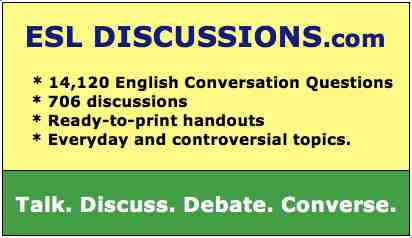Durchsuchen Sie die Webergebnisse zu dieser Domain.

Second, do English Learners, also ... have a "bilingual brain" that requires a fundamentally different sort of reading instruction than what monolingual students require? I will try to clarify. For a more in-depth research review, see Dr. Goldenberg's 2013 and 2008 articles in American Educator. Yes, it does. Although not as voluminous, research includes and addresses English learners. There is a world-wide literature on second-language literacy ...
Second, do English Learners, also known as Emergent Bilinguals, have a "bilingual brain" that requires a fundamentally different sort of reading instruction than what monolingual students require? I will try to clarify. For a more in-depth research review, see Dr. Goldenberg's 2013 and 2008 articles in American Educator. Yes, it does. Although not as voluminous, research includes and addresses English learners. There is a world-wide literature on second-language literacy acquisition.Kenneth Pugh (Yale University and Haskins Lab), an internationally-recognized cognitive neuroscientist specializing in the neuroscience of reading in first and second languages and who chaired a recent conference session on this very topic. With his permission, I’m sharing his perspective: In my view, there is presently no evidence that how we teach reading should be in any way different based on brain differences between bilingual and monolingual learners.Obviously, bilingual individuals have two language systems that must interact and so it is not surprising that we can see measured differences at the level of brain circuits, and this is of real scientific value of course.However, cross-language brain research confirms that learning to read is based on cognitive universals, specifically, that phonological development makes possible binding letters and sounds to meaning, which is foundational for learning to read in any language. Our understanding might change as the research evolves, but at the moment, in my opinion, there is nothing about ‘bilingual brain’ differences that suggests distinct or alternative pathways to literacy learning and best practice.

Learn about bilingual education in the classroom including transitional, dual immersion, and late-exit/developmental bilingual education.
Educators usually teach students in their native language in conjunction with a second language utilizing differing levels of the native and second language depending on the requirements specified in lesson plans and teaching models. Below are common bilingual education models employed in public school schools, charter schools and private institutions across the United States.Transitional Bilingual Education. This type of bilingual education is designed to help students learning a new language pick it quicker and make the transition to begin learning math, science, and other subjects in English.Non-English and English speaking students learn together in dual immersion bilingual education programs. Another type of dual language program teaches students using the following steps: 1) Teachers instruct students in a second language but are able to understand students when they must ask questions in their native languages.They will continue to be taught these subjects in a second language. This way, students will only receive grammar and language instruction in their native language, so it can be later applied to their foreign language instruction. Late-Exit or Developmental Bilingual Education.
ESL Conversation Lesson Questions: Free classroom handouts. English lesson on LANGUAGE. Use for debates, discussions, speaking, conversations, independent learning and more.
ESL Discussions: Free worksheet and online activity on Language.

The Language Exchange Program offers a platform to pair you with a native or near-native speaker of the language you are learning so you can expand your spoken communication skills, meet new friends, and be better able to engage the world around you.
Would you like to improve your foreign language speaking skills? Meet more friends from other countries? Know more about other cultures? Come join us! Sign up for the USC CLC’s Language Exchange Program!We also welcome Non-USC aliates who are native or near-native speaker of one of these languages to sign up for a language exchange partner.Click here for the Language Exchange Program FAQ.Click here to sign up for the Language Exchange Program.

With language exchange apps, you can practice talking in your target language with a native speaker in no time flat. This post contains nine of the best apps for language exchange, so you're sure to find one that fits your needs. Read more here, choose your favorite, then get chatting!
You can also search for a hashtag related to your target language, like #LearnGerman or #LearnArabic. If you find a user who looks like they could be interested in an exchange, DM (Direct Message) them with a polite self-introduction to try to get the ball rolling.Look for subreddits that start with “r/learn,” like r/LearnJapanese or r/LearnFrench. Learners often congregate in these places to share resources, organize exchanges and offer learning tips. These are great places for more in-depth discussions about your target language.That’s what we call a win-win situation, and you can find these wonderful learners to complement your goals with apps for language exchange.I’ve gathered the best language exchange apps of 2024 where you can find the perfect partner for you.

13 Government Programs for Teaching English in Spain: A Complete Guide for Aspiring ESL Teachers. Teach English Abroad.
It’s ideal for those who want to teach in larger cities like Tefl Madrid or Tefl Barcelona, and it comes with the added benefit of being part of a bilingual curriculum, which can boost your resume for future teaching opportunities. The EFL Teacher Exchange Program allows you to teach English in Spain while also providing opportunities to exchange experiences with other teachers from around the world.Erasmus+ provides funding for teachers to gain international experience, develop professionally, and improve language skills. This is a fantastic option for those looking for a flexible, short-term commitment while still being compensated for living expenses. It’s especially great if you’re interested in working in Tefl Seville or Tefl Barcelona. This program is designed to assist schools that offer bilingual education programs in Spain.The role typically involves helping students with their English language development and teaching subjects like English, history, or geography in English. Location: Available across the country, with significant opportunities in Madrid, Barcelona, Seville, and Marbella ... The Bilingual Assistant Program offers teachers a great way to work in more prestigious bilingual schools.If you enjoy cultural exchange and want to work alongside educators from various backgrounds, this program is for you. It’s perfect for those seeking a community-driven teaching role and those who want to gain insight into the local culture and language of Tefl Seville or Tefl Marbella.
The Emergent Bilingual Support Division provides direction and leadership with the implementation of Bilingual and English as a Second Language (ESL) Programs for emergent bilingual (EB) students/English learners (ELs).
The TEA Emergent Bilingual Support Division has developed program implementation Texas Effective Dual Language Immersion Framework (TXEDLIF), TBE, ESL rubrics and associated tools to support LEAs with evaluating and enhancing their bilingual and English as a Second Language (ESL) programs.These resources, tools, and web pages provide guidance on bilingual and English as a second language (ESL) program requirements:The following statutes relate to bilingual and English as a second language (ESL) programs:The TEA Emergent Bilingual Support Division welcomes Local Education Agencies (LEAs) and regional Education Service Centers (ESCs) to join our Emergent Bilingual Support Division Meetings.
The choice should be made at the ... and the resources available. ESL programs (rather than bilingual programs) are likely to be used in districts where the language minority population is very diverse and represents many different languages....
The effectiveness of various program models for language minority students remains the subject of controversy. Although there may be reasons to claim the superiority of one program model over another in certain situations (Collier 1992; Ramirez, Yuen, and Ramey 1991), a variety of programs can be effective. The choice should be made at the local level after careful consideration of the needs of the students involved and the resources available. ESL programs (rather than bilingual programs) are likely to be used in districts where the language minority population is very diverse and represents many different languages.This is a variation of the pull-out design, bringing students together from several classrooms or schools. The resource center concentrates ESL materials and staff in one location and is usually staffed by at least one full-time ESL teacher. All bilingual program models use the students' home language, in addition to English, for instruction.Students serve as native-speaker role models for their peers. Two-way bilingual classes may be taught by a single teacher who is proficient in both languages or by two teachers, one of whom is bilingual. Some programs provide neither instruction in the native language nor direct instruction in ESL.These use only English, but there is no explicit ESL instruction. As in sheltered English and content-based programs, English is taught through the content areas. Structured immersion teachers have strong receptive skills in their students' first language and have a bilingual education or ESL teaching credential.

Are you ready to embark on an exciting language-learning journey? Whether you want to dive deeper into the rich Hispanic culture or enhance your career prospects, finding the best Spanish language classes in Edmonton is the crucial first step. Lucky for you, I've compiled a list of the top ...
Are you ready to embark on an exciting language-learning journey? Whether you want to dive deeper into the rich Hispanic culture or enhance your career prospects, finding the best Spanish language classes in Edmonton is the crucial first step. Lucky for you, I've compiled a list of the top language…Lucky for you, I’ve compiled a list of the top language schools in the city that will help you master Spanish with ease and confidence. From the Edmonton Hispanic Bilingual Association to the Cultural Connections Institute – The Learning Exchange, these institutions offer immersive experiences, knowledgeable instructors, and a supportive learning environment.By enrolling in Spanish language classes at Language Trainers Canada, you can expect a tailored and immersive learning experience led by experienced trainers who will guide you towards achieving your language goals. If you are looking to learn Spanish in Edmonton, there are several excellent options available. From community organizations like the Edmonton Hispanic Bilingual Association and Gabriela Mistral Latin American School, to private institutions like Mucho Español and La Casa Lorca, there is a diverse range of classes to choose from. Additionally, the Cultural Connections Institute – The Learning Exchange and the Spanish Learning Institute offer immersive programs for a more intensive learning experience.The Cultural Connections Institute – The Learning Exchange (CCI-LEX) is an accredited English language school located in Canada. With a focus on providing high-quality ESL classes, tutoring, and exam preparation, CCI-LEX offers a range of programs for different types of students, including international students.

This ESL lesson plan is designed around a short video titled Why being bilingual is good for your brain and the theme of being bilingual. Students learn vocabulary related to bilingualism, talk about bilingualism, predict the content of a short video, watch a short video, answer comprehension ...
This ESL lesson plan is designed around a short video titled Why being bilingual is good for your brain and the theme of being bilingual. Students learn vocabulary related to bilingualism, talk about bilingualism, predict the content of a short video, watch a short video, answer comprehension questions, analyse a short video, write about what […]This ESL lesson plan is designed around a short video titled Why being bilingual is good for your brain and the theme of being bilingual. Students learn vocabulary related to bilingualism, talk about bilingualism, predict the content of a short video, watch a short video, answer comprehension questions, analyse a short video, write about what they have learned from a short video, and reflect on the lesson. Language level: Intermediate (B1) – Upper Intermediate (B2)We hope you enjoy this ESL lesson.
The importance of ESL is reflected in the fact that many districts even require all elementary teachers to have an ESL certification. You’ll want to make sure to research your top choice school to determine if you need ESL. Bilingual Education teachers instruct in two different languages.
The importance of ESL is reflected in the fact that many districts even require all elementary teachers to have an ESL certification. You’ll want to make sure to research your top choice school to determine if you need ESL. Bilingual Education teachers instruct in two different languages.The goal of bilingual classroom instruction is to help students become fluent in both languages. Like ESL classrooms, students may also come from different cultural backgrounds.Both ESL and Bilingual Education teachers are in high demand. In a rapidly diversifying world, the use of English is on the rise. Since 1965, the number of immigrants in the U.S. has quadrupled; this means many students are entering our school systems without the simple tools needed to succeed, such as understanding the language of instruction – English.One out of every four students speak a language other than English in their home and our school systems are struggling to provide every student with teachers they need. Every student is equally important, and ESL and Bilingual teachers truly go above and beyond to meet the needs of all our students.


Education and Language Acquisition is a multidisciplinary liberal arts department that houses programs in Teacher Education, Modern Languages and Literatures, and Academic ESL.
Education and Language Acquisition is a multidisciplinary liberal arts department that houses programs in Teacher Education, Modern Languages and Literatures, and Academic ESL. The department takes the College’s goal of internationalizing the curriculum very seriously. The lively exchange of ideas in the areas of theory and pedagogy among the language, literature, and education faculty has allowed for the creation of enriched educational experiences for students, which recognize their inherent strengths and heritages and prepares them for success in an increasingly culturally and linguistically diverse world.The Education Associate: Bilingual Child Program is designed for students interested in pursuing teaching as a career with a focus on second language learners.Japanese Option (AA degree) enables students to learn the Japanese language and other related disciplines such as Japanese literature, the art of Asia, East Asian history, religions in Asia, and social psychology in Asia.The option is designed for students interested in pursuing teaching English as a New Language (also called English as a Second Language or English as a Foreign Language) in private and public-school contexts, both in the United States and abroad.
If local groups are not available, several platforms exist (some may have premium paid options) such as Tandem or Tandem Partners; Italki, Open Language Exchange or Speaky are great for finding a mother tongue partner or a teacher, while Coeffee also allows you to play language games with other ...
An easy way to look for a local tandem mate is by using Facebook groups, you can type some keywords, for example: “Tandem” or “Language Exchange” and the name of the city you are living in, to find out about local initiatives usually hosted in a pub or in a cafe.If local groups are not available, several platforms exist (some may have premium paid options) such as Tandem or Tandem Partners; Italki, Open Language Exchange or Speaky are great for finding a mother tongue partner or a teacher, while Coeffee also allows you to play language games with other students.This tool is available in the 24 official EU languages. It’s free, however, you have to be enrolled in an EU youth project to access it. Participating in a study period abroad, a youth exchange or a volunteering experience abroad is also a great way to develop your linguistic skills.Finding a tandem partner can be done through various methods like language exchange apps, online communities, or even local meetups for language learners.

Language exchange app for foreign language conversation practice. Chat, play and learn with native speakers. Find the best conversation exchange partners!
With Bilingua’s matching algorithm, you get to connect with the best language partners suited for you.Be on top of language learning. On Bilingua, you get access to topic recommendations, learning tips and 1-on-1 tutors — soon!So great app!!! I've downloaded thid app only few mins ago but I already can tell that's the best language exchange app I've ever tried~ Super design, very kind peopleThere are millions of people like me out there who are desperate to improve English language proficiency in speaking.

The Mixxer hosted by Dickinson College is an entirely free non-profit website hosted by Dickinson College. What began as a small project to help Professor Meguro at Dickinson College find Japanese partners for her students has expanded to 30 - 40,000 active users per month around the world.
They are obliged to have a conversation with native speakers of French, starting with our NOVA ESL students from Francophone countries, family members who speak French fluently and students who use the Mixxer, a well-established language exchange program organized by Todd Bryant at Dickinson College."When a university language course costs up to $5,500 a semester, it’s no wonder so many American adults never become bilingual in their spare time."Becoming bilingual opens up a whole new world of different people, different cultures, and different emotions. It also takes a huge time commitment—one that many of us can't dedicate to.
Live a unique experience abroad with ESL! Choose between 20 languages & 200 destinations for your language course abroad. ESL helps you with everything, free of charge.

If you want to master a language, use it! Drop the old excuse that you have no-one to practise your Dutch or Portuguese with. Join a conversation exchange and you can improve your skills for free.
An easy way to look for a local tandem mate is by using Facebook groups, you can type some keywords, for example: “Tandem” or “Language Exchange” and the name of the city you are living in, to find out about local initiatives usually hosted in a pub or in a cafe.If local groups are not available, several platforms exist (some may have premium paid options) such as Tandem or Tandem Partners; Italki, Open Language Exchange or Speaky are great for finding a mother tongue partner or a teacher, while Coeffee also allows you to play language games with other students.This tool is available in the 24 official EU languages. It’s free, however, you have to be enrolled in an EU youth project to access it. Participating in a study period abroad, a youth exchange or a volunteering experience abroad is also a great way to develop your linguistic skills.Finding a tandem partner can be done through various methods like language exchange apps, online communities, or even local meetups for language learners.
Bilingual education teachers teach in two languages, while ESL teachers focus solely on English. A master’s degree in bilingual/ESL education prepares teachers for either profession.
Bilingual education teachers are fluent in students’ native language and able to ease the transition between students’ native language and English. ESL teachers, on the other hand, do not speak the student’s native language, instead focusing on implementing the best process for immersing students in the English language.Both ESL and bilingual education are effective for teaching students English, but which approach will you utilize in your classroom? ESL classrooms are filled with students with diverse backgrounds, cultures, and languages. However, there’s only one language used for teaching in an ESL classroom: English.Do ESL teachers have to be bilingual? No, English is the only language an educator needs to know to excel as an ESL teacher. The principle driving ESL education is that students will learn English faster if they are immersed in the language. Although they’re supported every step of the way, it’s sink or swim for ESL learners as they’re taught to read, write, and speak English.Furthermore, students’ proficiency in their native language may suffer as they focus solely on learning English. As an ESL teacher, it would be your job to help your class overcome these challenges. If you are fluent in a second language, bilingual education may be the more fulfilling and financially rewarding career option.


Explore how English influences various cultures worldwide, including media, business, and education, reshaping global interactions.
Efforts to preserve local languages and traditions are becoming increasingly prominent as part of a broader cultural preservation movement. Schools in some regions are now emphasizing bilingual education models, teaching both the local language and English to ensure that the next generation retains a strong sense of cultural identity while being globally competent.Bilingual or multilingual individuals often show increased cognitive flexibility, better problem-solving skills, and enhanced creativity. However, when education in English is not balanced with adequate instruction in the native language, it can lead to limited proficiency in both languages.This exchange can lead to a richer, more diverse global culture, where understanding and appreciation of different ways of life are enhanced. Moreover, as people around the world adapt English to their local contexts, new and unique variations of the language emerge, further enriching its global character.Balancing these aspects will be crucial as the world continues to navigate the complexities of globalization and cultural exchange. As English shapes and is shaped by the cultures it touches, it serves as a powerful reminder of our interconnected world. The proliferation of English in the technological realm not only dictates the language used in software and hardware but also influences how new technological terms are integrated into different cultures.
Language exchange is a method of language learning based on mutual language practicing by learning partners who are speakers of different languages. This is usually done by two native speakers teaching each other their native language. Language exchange is different from other Language learning ...
Language exchange is a method of language learning based on mutual language practicing by learning partners who are speakers of different languages. This is usually done by two native speakers teaching each other their native language. Language exchange is different from other Language learning methods as there is usually no set syllabus or activities.In modern contexts, "language exchange" most often refers to the mutual teaching of partners' first languages. Language exchanges are generally considered helpful for developing language proficiency, especially in speaking fluency and listening comprehension.Language exchanges that take place through writing or text chats also improve reading comprehension and writing ability. The aim of language exchange is to develop and increase language knowledge and intercultural skills. This is usually done through social interaction with the native speaker.This practice has long been used by individuals to exchange knowledge of foreign languages. For example, John Milton gave Roger Williams an opportunity to practise Hebrew, Greek, Latin, and French, while receiving lessons in Dutch in exchange. Language exchange first came about in the early 1800s where school aged children in England were introduced to the newly set up program.Countries such as Belgium and Switzerland found the language exchange program very easy to run as there were many languages spoken in the one country. French and German youth picked up language exchange in 1968 which then spread to Turkey and Madrid. Universities are increasingly experimenting with language exchanges as part of the language learning curriculum.





